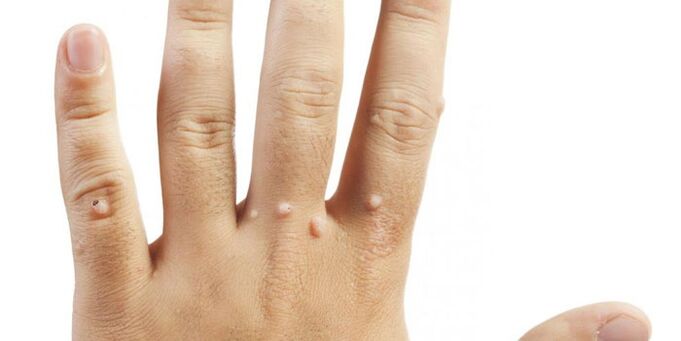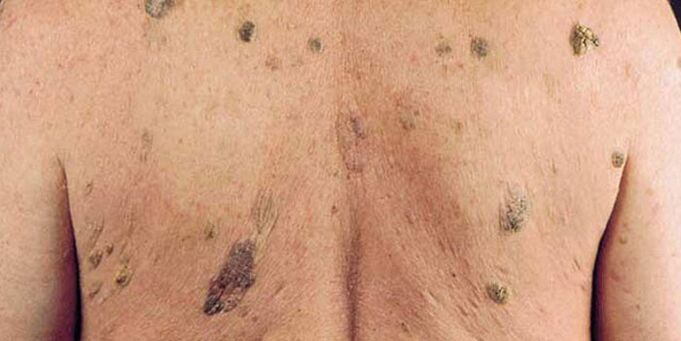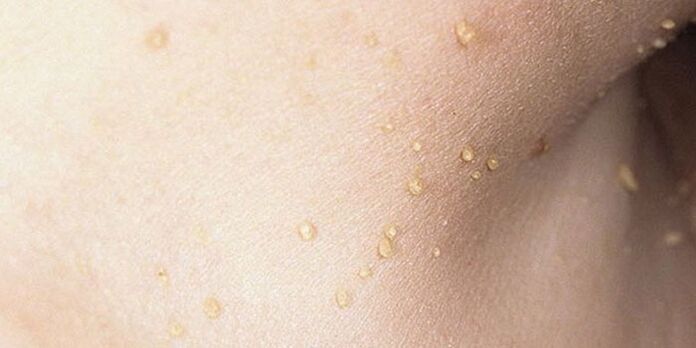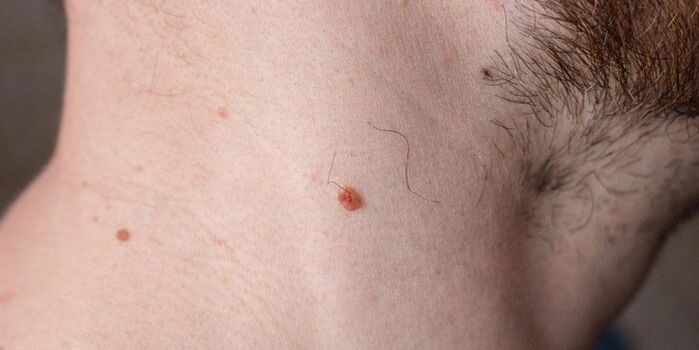If such a growth appears on a person's skin, he asks the question what kind of changes have taken place in the body and are they not dangerous? Read on for useful information on the properties of different types of papillomas. This information will help you to identify the existence of such images in order to process them in a timely manner if necessary.
Varieties of papillomas
Why do these processes often appear on the skin with age? These changes in the skin cause human papillomavirus or HPV in short. After infection with such pathogens, the patient develops papillomatosis disease in which warts of various types appear on the skin or mucous membranes. This growth is benign but some types of papillomas are at high risk of being reborn as malignant tumors. For this reason, you should definitely see a doctor if you notice such changes in your skin!
Medicine has identified more than 40 variants of papillomavirus, which cause various types of the disease in humans. The type of virus that has entered the body depends on the appearance of the papilloma, because the infection appears externally with different types of images on the body elements. According to the general classification, the following types of growth analysis are distinguished.
- Simple, which is also called rude - keratinous growth of dark color.
- Plants - affects the soles of the feet.
- Acrochords are thread-like formations, but their body rests on a leg.
- Flat formations or common warts - often occur in adolescents on hands, fingers, face.
- Pointed - locally on the mucous membranes of the oral cavity, genitals or anus.
- Squamous cell carcinoma - consists of squamous cell carcinoma that has grown due to the effects of the virus and stroma (connective tissue and vascular base).
- Basal cell carcinoma - grows from cells in the base of the epidermis or from hair follicles.
- Internal - they do not appear in the area of the outer visible parts of the body, but where they are difficult to notice, for example in the larynx or bladder.

Benti
Such growth is often called warts. Their characteristic features are small size and special features: wide base and sharp tip. These warts are flesh-colored or slightly pink in color and appear either singly or in groups. They are distinguished by rapid growth: in just a few days, when there was only one growth, a whole group of them is formed. In shape, this family resembles cauliflower flowering. Genital warts are often located on the mucous membranes: in the mouth, on the tongue, as well as in the genital area or near the anus.
Squamous
This form of skin growth caused by the HPV virus is one of the most common because it can have a very wide location all over the body. What does a papilloma of this type look like? These are flat shapes with a round or oval shape, which protrudes slightly beyond the surface of the skin - no more than 1 mm, can be both soft and with signs of degeneration. They often appear in groups, in color they do not really differ from the surrounding coat.
Such growth occurs mainly in the upper part of the body: in the face (for example, on the nose or lip), neck. They often appear on the mucous membranes: inside the mouth on the cheeks or tongue. Squamous cell carcinoma can be detected in the esophagus, larynx, as well as in the organs of the genitals and even in the rectum. People who have such formations are advised to remove them due to the high risk of malignancy.
Basal cells
These plants are often called basaliomas or senile warts because they often affect the skin of older people. These formations grow slowly from the base of the epidermis (hence the name) or from the hair follicles, appearing on the surface of the skin in the form of papillae from pink to dark brown in color. The areas of the body where basal cell carcinomas are common are the armpits, back and lips and nose. Their distinguishing feature is that they never develop into cancerous tumors, which is why they are considered safe.

What papillomas look like in close proximity
When it comes to the images in the genital area, it refers to the shape of the head. Papillomas of this type are overgrown cells in the upper layer of the epithelium that look like groups of small papillae. Such growth can equally affect both sexes. They are located in the groin and directly on the surface of the genitals: in men - on the head of the penis or in the cavity of the urethra, in women - on the mucous membranes of the vagina, the surface of the cervix and the uterus itself.
Disclosure of changes in genital syndrome that occur due to human infection with the HPV virus require special attention from the patient. He needs to consult a doctor and remove the growth of the genitals, because with the transformation of such a disease into a chronic form, the risk of infertility and oncology increases greatly.
Image: how papillomas look on the body
In order to imagine exactly and yourself what these images are like, it will be useful for you to look at the images of what such growth looks like. Check out this selection of photos that show examples of different types of papillomas. Check with these growth pictures that you or your loved ones have, and you can determine in advance whether these warts need to be removed and prevent serious risks to your health.
















































































